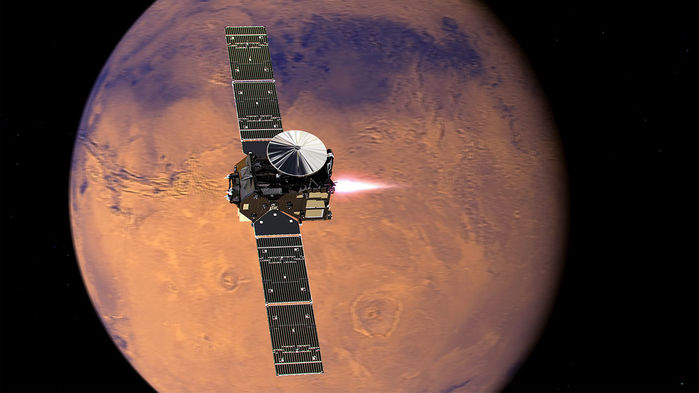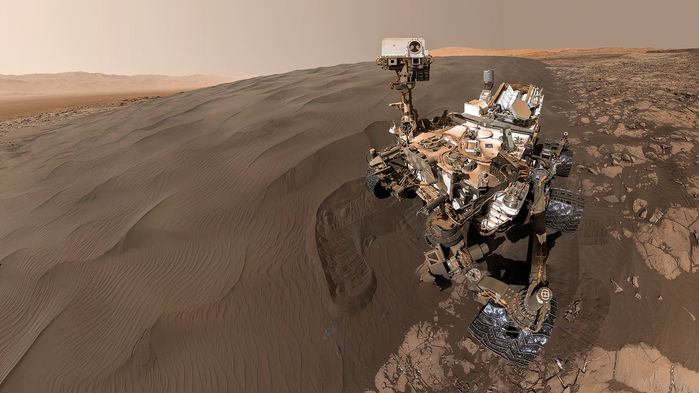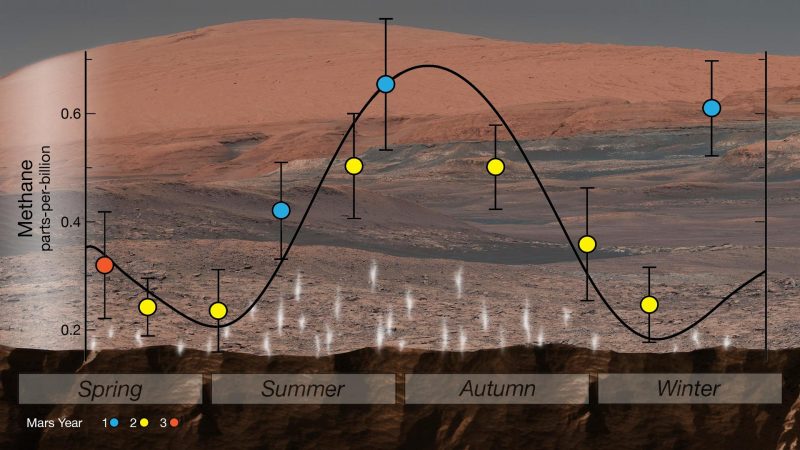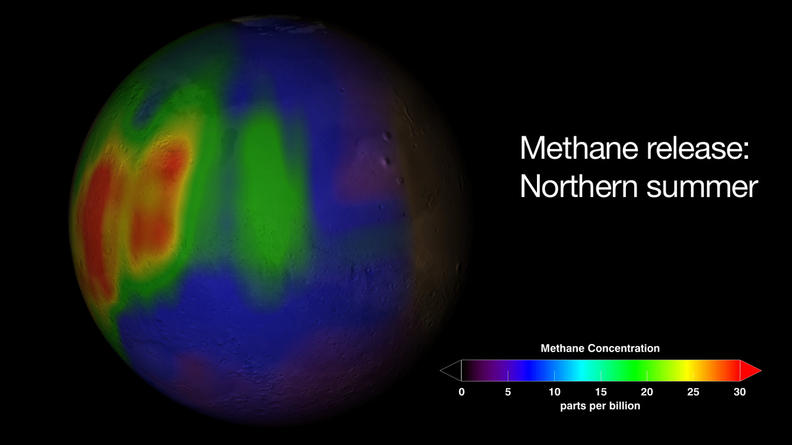
One of Mars’ most puzzling mysteries has been the discovery of methane in its atmosphere. This is exciting because, on Earth, methane comes from two primary sources – biology and geology. Mars’ methane has been detected by telescopes on Earth, orbiting spacecraft and rovers. It has been quite well established that the methane is there; the big question is where does it come from? But now there is a new wrinkle in the data. Recent observations by the European Space Agency’s ExoMars Trace Gas Orbiter (TGO) have shown no presence of the methane, even though its instruments are more sensitive to tiny amounts than any of the instruments used previously. The new results were reported in Science on December 12, 2018, with the peer-reviewed paper published the same day. They were also announced at the fall meeting of the American Geophysical Union in Washington, D.C.
The findings prompted an unexpected question – has Mars’ methane gone missing?
Best New Year’s gift ever! EarthSky moon calendar for 2019
TGO is one of two components of the ExoMars mission (the other was a landing module, which crashed on Mars’ surface). TGO began searching the atmosphere for traces of methane earlier this year, after the spacecraft achieved its circular “science” orbit of 250 miles (400 km) above Mars’ surface in April 2018. Two key spectrometers are being used – a Belgian instrument called NOMAD and a Russian one called ACS. They are capable of detecting methane in extremely small amounts – better than other instruments used so far. The scientists were sure they would see some methane, but when they analyzed the data sent back – they saw nothing.
These initial results show no sign of methane down to a very minute level of 50 parts per trillion. The observations scanned most of the atmosphere, going almost all the way down to the surface.

Ann Carine Vandaele, NOMAD’s principal investigator and a planetary scientist at the Royal Belgian Institute for Space Aeronomy in Brussels, said that there is still some cleanup to do with the data, adding:
But we already know we can’t see any methane.
So what is happening? The results seem disappointing, certainly, but there are a few things to keep in mind.
The Curiosity rover has detected small amounts of methane on multiple occasions now. Plus, that data indicates the methane is seasonal in that region of Gale Crater, peaking in summer and dwindling again in winter. Curiosity detected a methane spike of seven parts per billion (ppb), which lasted for several months, before finding a seasonal spike of 0.7 ppb. In 2004, the Mars Express orbiter saw a methane spike of 10 ppb.
As Chris Webster, a planetary scientist at the Jet Propulsion Laboratory who leads the methane-sensing instrument on Curiosity noted, it took his team six months to detect the first methane spike and years to find the seasonal background methane cycle. He is optimistic, saying that:
I’m confident that over time there will be a consistency between the two data sets.


Curiosity actually saw a large seasonal variation in the amount of methane. As noted by Webster:
The thing that’s so shocking here is this large variation. We’re left trying to imagine how we can create this seasonal variation.
The lowest background level of methane that Curiosity detected was 0.4 ppb. The highest levels ever detected so far were by Mike Mumma, a planetary scientist at Goddard Space Flight Center, and his colleagues in 2009. They detected spectral signs of a 45 ppb methane plume using the NASA Infrared Telescope Facility and the twin telescopes at the W.M. Keck Observatory in Hawaii.
There’s another possible positive result in all this. The lack of any methane right now would seem to indicate that it is not coming down through the atmosphere from space, e.g. from comets. That was one possible source of methane that had been considered early on.
That would also be consistent with Curiosity’s findings, that the methane is seasonal and most likely originating from underground sources. According to Webster:
The methane is not coming from above. That’s a big result.

Scientists also think that methane could form from organic carbon that enters the atmosphere with dust, which would react with solar radiation. So where is it?
It is suspected that Gale Crater is probably just one of many locations where methane seeps to the surface. But even if there are thousands, the total amount of methane produced would still be small. According to Sushil Atreya, a planetary scientist at the University of Michigan and a member of the Curiosity science team:
I actually did the calculation. It’s going to average out to be a very, very low value, nondetectable.
Bottom line: The mystery of Mars’ methane just got more puzzling. Why has TGO found no methane yet when other previous missions and observations have? Only further observations will help to answer that question and what the origin of Mars’ methane actually is. Confirmation that the methane originates from Mars itself – most likely underground – would be evidence that Mars is still alive – either geologically or biologically, or both.











